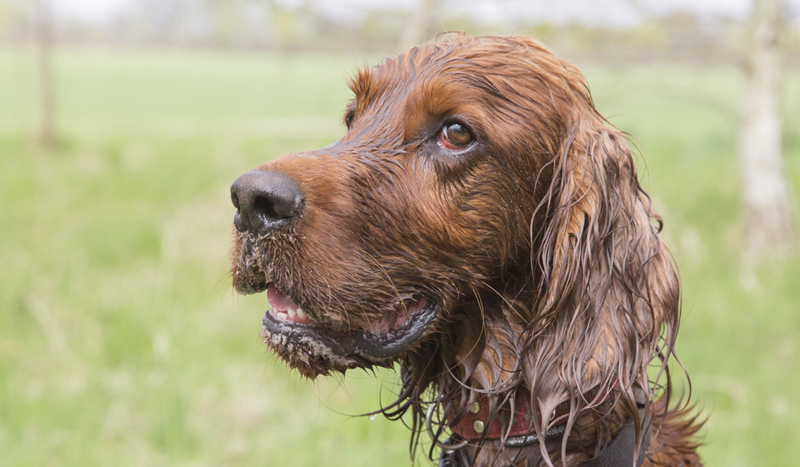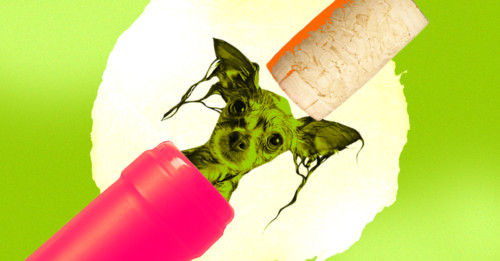Corked wine, or wine that has been affected by cork taint, occurs in around five percent of cork-enclosed bottles. That means that if you’re an avid wine drinker, you’re likely to come across a corked bottle or two in your life. Here’s how to tell if your bottle of wine is corked, and what to do if it happens.
Let’s start with what isn’t corked wine:
- It’s not the pieces of cork floating around your wine or a cork covered in little white crystals. These crystals, which are called tartrate, are a natural by-product of some wines and are totally harmless.
- You also can’t tell if a wine is corked from smelling the cork itself.
- Another fun fact is if the bottle you opened used a screw cap or synthetic cork to form the seal, it can’t be corked.
How Does Wine Become Corked?
Cork is a natural product derived from trees, meaning that, regardless of sanitation practices, there is always going to be some bacteria in its pores. “Whether you sanitize it or not, you’re always going to have something in there,” says VinePair’s tasting director, Keith Beavers. Cork taint is what happens when an enzymatic reaction between chlorophenol — a flaw that can occur naturally inside cork — and fungus. When these substances interact, they create a compound called TCA.
When this chemical compound makes airborne contact with wine, it destroys its aromatics. “It will not allow your nose to smell any of the fruits the wine is made from. Instead, you would smell a very earthy, weird musty smell,” Beavers says. Some people compare the aroma to that of a wet newspaper or musty basement, while others believe it to smell like wet dog.
While many believe TCA impacts the physical compounds in a wine, “some scientists are starting to believe that it actually blocks our ability to smell fruit. The compound actually messes with our brains,” Beavers says.
How to Tell if Your Wine Is Corked
If you’ve never smelled a corked wine before, it can be very difficult to tell if your wine is corked or not. But, “once you’ve smelled a corked wine, you’ll never forget it again,” Beavers says.
One way to decipher whether or not a wine is corked, though, is to smell and taste it and try to pick out the notes you’ve come to expect from that wine style. If a wine typically smells fruit-forward, but you’re not picking up any fruit notes, you can be pretty confident that something’s not right.
But, as Beavers suggests, the best way to learn about the aromas and flavors of a corked wine is to try a corked wine. “When I would teach wine classes and we got a corked wine, I would get very excited,” Beavers says, noting that it was often his students’ first experiences tasting cork tainted wine.
What To Do If Your Wine Is Corked
First, it’s important to know that drinking corked wine won’t hurt you. “The only poisonous thing in wine is alcohol,” Beavers says. Plus, the alcohol in wine would kill any harmful bacterias that could be potentially harmful to our bodies.
Still, if a wine you order turns out to be corked, you don’t have to grin and bear it. “You have every right to return it,” Beavers says. “If your steak wasn’t cooked properly, you’d return it. I don’t give a sh*t if it’s $1,000 a bottle. You’re spending money on something.” Plus, restaurants tend to mark up their wines, especially in bigger cities, meaning that you’re likely already overpaying for that bottle.

If you want to avoid corked wine altogether, the only surefire way is to…avoid cork. “The only time a screw-capped wine will be faulty is if, during the bottling process, some bacteria got on the glass rim before the cap enclosure was installed,” Beavers says. In fact, cork taint is the reason why the screw cap was introduced to the wine world in the first place (it was previously used exclusively for spirits).
These days, over 30 percent of the world’s wines are sold under screw caps, meaning that it’s not impossible to avoid cork-enclosed wine. But remember, the statistics say you’ll only get a corked bottle one out of every 20 times; you might as well use those instances as learning experiences and move on to the next.
